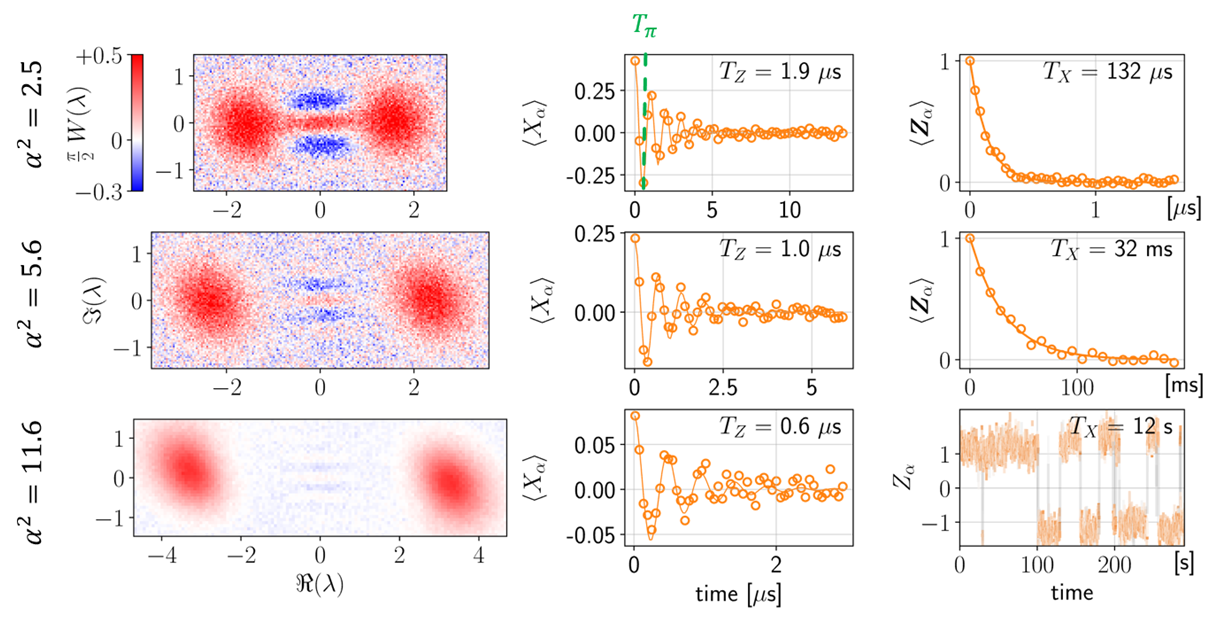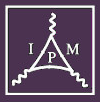The QUANTIC team (LPENS – Mines – INRIA), in collaboration with start-up company Alice & Bob, have demonstrated quantum operations on a very stable qubit: its measured bit-flip time exceeds 10 seconds.
These results appeared in the journal Nature on May 6th 2024.
Why is this important?
The uncontrolled interactions of a quantum system with its environment, known as decoherence, continue to induce too many errors on qubits, thereby blocking their deployment into scalable quantum machines.
A hopeful strategy is to build qubits that are inherently protected against certain types of errors. Such qubits are known as “biased noise qubits”. The foundational promise is that if a qubit is almost perfectly protected at the hardware level against one type of error (for example bit-flips), then the hardware requirement to protect against the other type of error (for example phase-flips), is considerably less demanding.
However, the foreseen gain rests on a severe condition: quantum manipulations of the qubit must not break the protection that has been so carefully engineered at the hardware level. If this condition is not met, the advantage of biased noise qubits is lost.
In this experiment, we have implemented such a qubit, known as the cat-qubit. It is encoded in a superconducting oscillator endowed with two-photon dissipation. We show that our cat-qubit maintains a bit-flip time above ten seconds — a 10000-fold improvement over previous implementations — while controlling the phase of quantum superposition states.
This experiment demonstrates the compatibility of quantum control and inherent bit-flip protection at an unprecedented level, showing the viability of biased noise qubits for future quantum technologies.
How did we achieve this result?
The experimental pursuit of the cat-qubit has remained stuck at the millisecond level for bit-flip times. This is far shorter than the expected macroscopic timescales needed to spare the need for active bit-flip protection all together.
Increasing evidence has incriminated the probing circuit: A Transmon qubit, for breaking bit-flip protection. Removing or replacing the Transmon was an outstanding challenge since it required inventing a new quantum tomography protocol.
This is precisely what has been achieved in this experiment. Indeed, our Transmon-free protocol requires no additional circuit elements. Instead, it leverages the non-linearity already present in the cat-qubit to measure quantum observables.
This has led us to a four order of magnitude improvement in bit-flip times, placing an ultra-low bound (hundreds of milliHertz) on the bit-flip rate induced by coherent qubit control.

Our qubit – the cat-qubit – is encoded in a superconducting oscillator. The two qubit states are coherent states of equal photon number and opposite phase. The left column displays measured Wigner functions of quantum superposition state for increasing photon numbers. The middle column displays measured quantum oscillations of the phase of these superpositions, thereby demonstrating our ability to control the quantum state of our qubit. Finally, the right column demonstrates the outstanding stability of our cat-qubit : its bit-flip time exceeds 10 seconds for the largest photon number states.
En savoir plus :
https://www.nature.com/articles/s41586-024-07294-3
Informations complémentaires :
Laboratoire de physique de L’École normale supérieure (LPENS, ENS Paris/CNRS/Sorbonne Université/Université de Paris)
Auteur correspondant : Zaki Leghtas
Contact communication : L’équipe de communication










